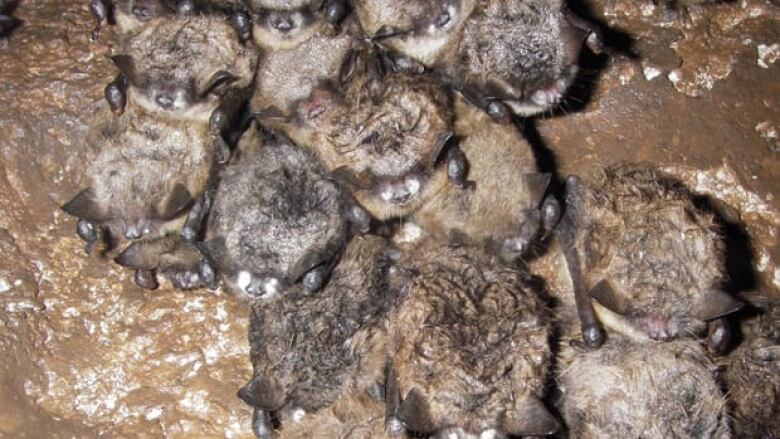N.B. studies deadly bat fungus
White-nose syndrome spreading across North America

A New Brunswick researcher is studying a bat fungus that has killednearly seven million bats across North America and is continuing to spread.
White-nose syndrome was first detected in a cave west of Albany, N.Y., in 2006.
Now, the federal government's Committee on the Status of Endangered Wildlife in Canada is discussing whether to put the little brown bat, the principal bat that's been affected, on the endangered species list.
The problem is infected bats wake early from hibernation and appear to die from dehydration, starvation, or exposure, said Karen Vanderwolf, a graduate student at the University of New Brunswick.
"This is very unique because it actually penetrates into the epidermis," she said. "Fungal infections of humans, usually they're just surface infections. It's very weird."

Vanderwolf now has funding to spend the next two years studying the problem, including how bats acquire it and how it is spread. And she likelywon't have to go far.
The diseasenamed for the white patches that appear on the muzzles and other body parts of hibernating batsis also spreading in New Brunswick, according to Saint John zoologist Don McAlpine.
A year ago, he found signsof white-nose syndrome among 6,000 hibernating bats in a cave south of Moncton.
"When all was said and done, probably more than 80 per cent of those bats died that winter," said McAlpine.
He recentlyconfirmed the fungus is at three other sites in southeastern New Brunswick.
"We saw visible signs of white nose on about 10 to 25 per cent of the bats in the caves we were in just before Christmas," said McAlpine.
Those caves have a couple of hundred bats in them, he said.
Could affect insect populations
The declining bat population is a serious problem because bats are a natural form of pest control, said McAlpine.
If there aren't enough bats to eat insects and help control insect populations, that could have a serious impact on farming, pesticide use, and the price of food, he said.
Earlier this month, the U.S. Fish and Wildlife Serviceestimated between 5.7 million and 6.7 million bats in Canada and the United States have succumbed to white-nose syndrome.
The fungus has been detected in 16 states, along with New Brunswick, Nova Scotia, Quebec and Ontario. Scientists expect the disease will continue to spread to other regions.
Dan Ashe, director of the U.S. Fish and Wildlife Service,said the "startling" figures illustrate the severity of the threat facing the animals.
The committee studying whether to put bats on the endangered species list declined to comment.
Bats can live between 30 and 35 years and have a relatively low birth rate, with only one young born every year,so it could take many years for the population to recover, scientists have said.












_(720p).jpg)


 OFFICIAL HD MUSIC VIDEO.jpg)
.jpg)



























































































